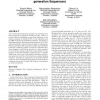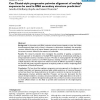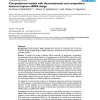107 search results - page 3 / 22 » Designing Nucleotide Sequences for Computation: A Survey of ... |
102
click to vote
SAC
2010
ACM
14 years 11 months ago
2010
ACM
Next Generation Sequencing machines are generating millions of short DNA sequences (reads) everyday. There is a need for efficient algorithms to map these sequences to the referen...
136
click to vote
CCECE
2006
IEEE
15 years 5 months ago
2006
IEEE
During recent years there has been an explosive growth of biological data coming from genome projects, proteomics, protein structure determination, and the rapid expansion in digi...
BMCBI
2007
14 years 11 months ago
2007
Background: In ribonucleic acid (RNA) molecules whose function depends on their final, folded three-dimensional shape (such as those in ribosomes or spliceosome complexes), the se...
ISMB
1997
15 years 28 days ago
1997
We present a system of programs designed to facilitate sequence analysis projects involving large amounts of data. SEALS (System for Easy Analysis of Lots of Sequences) is a logic...
BMCBI
2006
14 years 11 months ago
2006
Background: Small interfering RNAs (siRNAs) have become an important tool in cell and molecular biology. Reliable design of siRNA molecules is essential for the needs of large fun...




